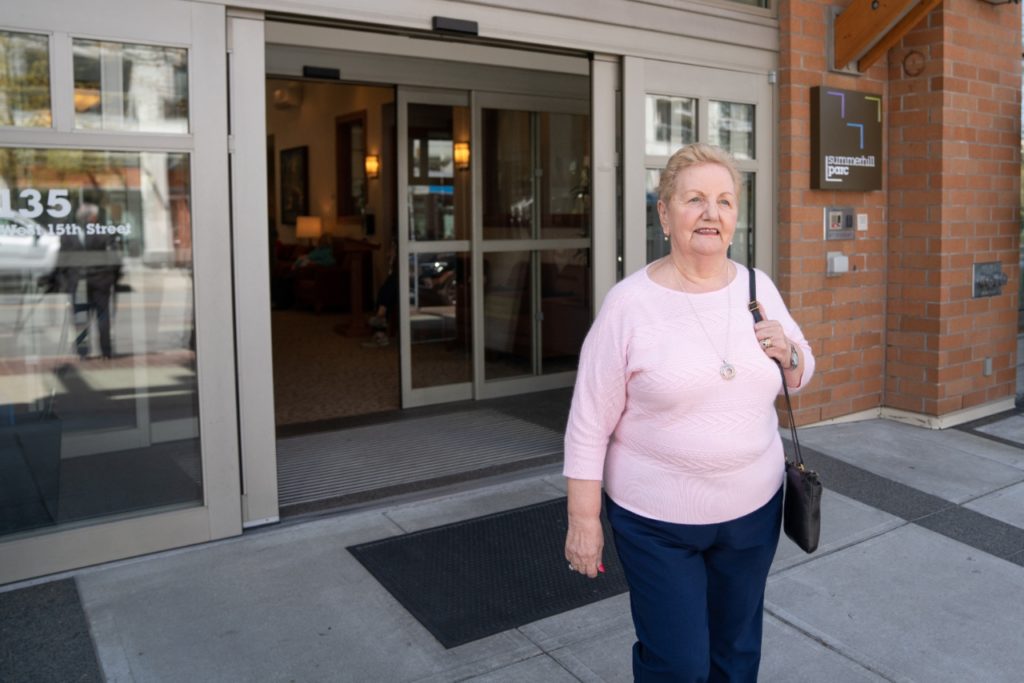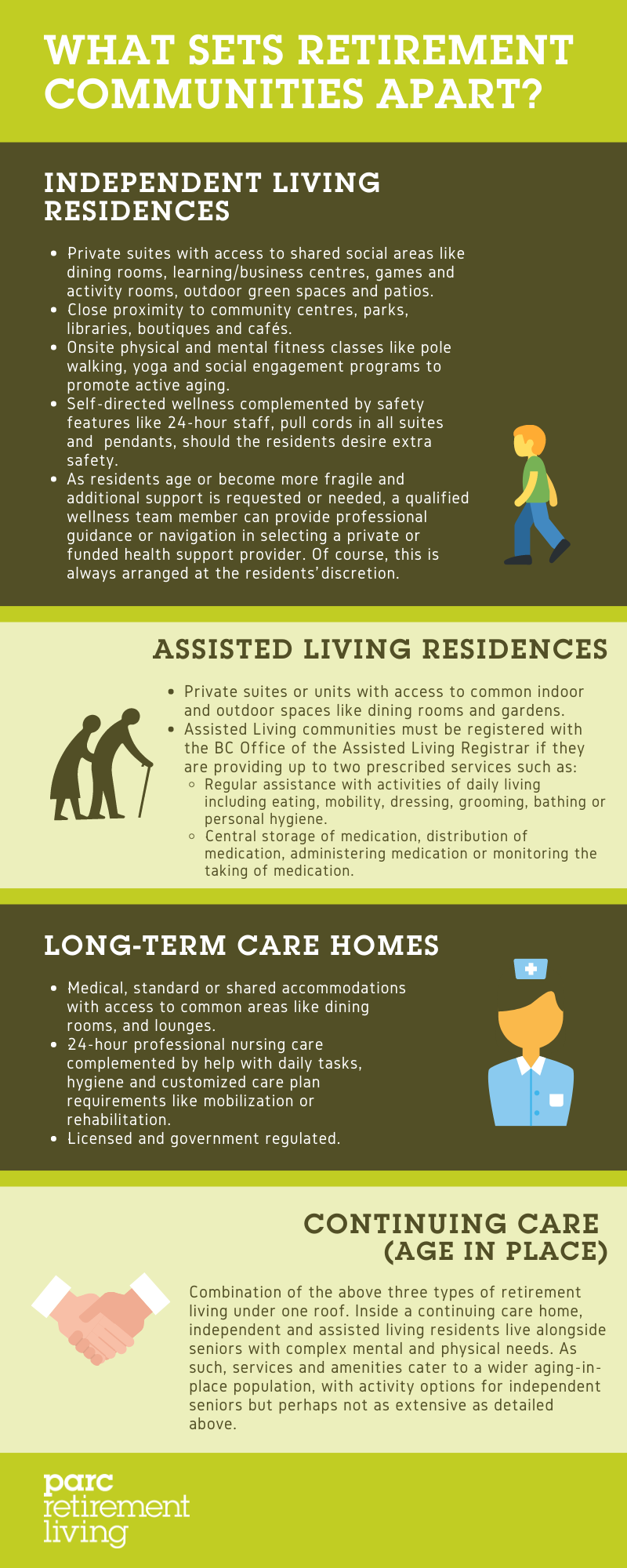Understanding the Differences Between Independent Living, Assisted Living and long-Term Care
in Independent LivingWritten by PARC Retirement Living

Thinking about moving into a retirement community but not sure which type is right for you? Or perhaps the choices seem limited and nothing speaks to you?
There is a wide range of options out there, each catering to seniors of varying needs, activity levels and lifestyle expectations. Whether you prefer the supportive, more self-guided environment of independent living, or require the 24-hour medical assistance of long-term care or perhaps something closer to the moderate medical care services offered in assisted living, this simple guide should help to clarify the differences between the main types of senior living settings. With all the different types of retirement living, it’s understandable to assume that all older adult residences in B.C. are the same. Here is a simple breakdown of each option to help you with your next move:

Independent living residences
The objective of independent living communities is to enable seniors to continue to pursue active, social, healthy lifestyles for as long as possible. Emphasis on convenience – if you’re tired of cooking, cleaning, yard work, or house maintenance, independent living is right for you. Residents enjoy freedom of choice and have complete control of their lives; they possess the mobility and desire to take advantage of their retirement residence’s offerings. Features common to independent living residences:
- Private suites with access to shared social areas like dining rooms, learning/business centres, games and activity rooms, outdoor green spaces and patios.
- Services that include weekly housekeeping, transportation to personal appointments and nutritious chef-curated meal programs – which may include flexible dining options.
- Onsite physical and mental fitness classes like pole walking, yoga and social engagement programs to promote active aging.
- Cultural and social programming, such as painting and writing workshops, and offsite excursions ranging from a night out at the symphony to a day trip to a tulip festival or art gallery.
- Close proximity to community centres, parks, libraries, boutiques and cafés.
- Self-directed wellness complemented by safety features like 24-hour staff, pull cords in all suites and pendants, should the residents desire extra safety.
- As residents age or become more fragile and additional support is requested or needed, a qualified wellness team member can provide professional guidance or navigation in selecting a private or funded health support provider. Of course, this is always arranged at the residents’ discretion.
- Many independent living residences are privately owned.

Assisted living residences
Similar to independent living, assisted living provides an environment for older adults seeking to remain as safe and socially engaged as possible. That said, assisted living residents tend to be less mobile and require help with daily living activities – hence the varying levels of onsite care or nursing. Assisted living communities must be registered with the B.C. Office of the Assisted Living Registrar if they are providing up to two of the six prescribed services outlined in the Community Care and Assisted Living Act. Features common to assisted living residences:
- Private suites or units with access to common indoor and outdoor spaces like dining rooms and gardens.
- General services that include weekly housekeeping, healthy meal programs and a 24-hour emergency response system.
- Services are provided by a designated care support team (employed by the community or contracted out), which limits the choice of provider by the senior.
- Health and wellness promotion, crafts and onsite social activities like movie nights, music and bingo, which focus on group social engagement.
- Depending on mobility and agility, opportunities can include assisted walks and excursions like weekly shopping trips and outings to nearby services.
- Regulated by the B.C. Office of the Assisted Living Registrar.
- Regular assistance with daily living activities, including eating, mobility, dressing, grooming, bathing, personal hygiene and medication administration.
- Central storage of medication, distribution of medication, administering medication or monitoring the taking of medication.

Long-term care homes
Older adults who can no longer live independently or direct their own care, due to physical and/or cognitive health conditions, can turn to long-term care homes or nursing homes as an option. Compared to seniors in independent or assisted living communities, those in long-term care are much less mobile and require higher levels of care. These communities provide more than two prescribed services covered in the Community Care and Assisted Living Act. Features common to long-term care homes:
- Medical, standard or shared accommodations with access to common areas like dining rooms, and lounges. Some properties feature patios and landscaped gardens.
- General services that include housekeeping, laundry and daily meals (potentially including prescribed diets and tube feeding).
- 24-hour professional nursing care complemented by help with daily tasks, hygiene and customized care plan requirements like mobilization or rehabilitation.
- Access to ongoing planned social and recreational activities like, music therapy and family participatory events.
- Licensed and government regulated.

Continuing care (also known as age in place)
Some seniors’ residences serve a cross-section of older adults, combining the above three types of retirement living under one roof. Inside a continuing care home, independent and assisted living residents live alongside seniors with complex mental and physical needs. As such, services and amenities cater to a wider aging-in-place population, with activity options for independent seniors perhaps not as extensive as detailed above.
Deciding which senior living option is best for you doesn’t have to be difficult. Ultimately, it comes down to which type of residence best aligns with your level of health, mobility, fitness and independence, as well as lifestyle choice.
Do you think independent senior living is right for you and you’d like to learn more? Book a tour with PARC Retirement Living today.


